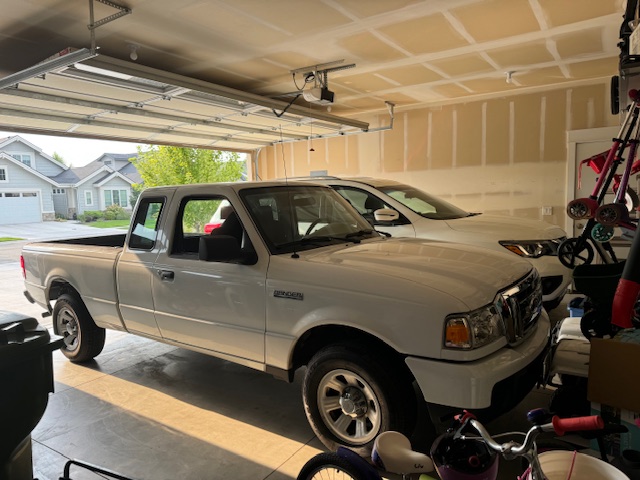Car Depreciation Calculator: How Much Value Your Vehicle Loses
Calculate Vehicle Depreciation
Vehicle Value Over Time
Driving Off the Lot
After 1 Year
After 2 Years
After 3 Years
Key MilestoneAfter 5 Years
After 8.4 Years
Key MilestoneAfter 10 Years
Key Depreciation Metrics
Average Annual Depreciation
—
Based on 10-year ownership period
Average Annual Decline
—
Percentage value loss per year
Total depreciation over 10 years: —
Depreciation Curve
How to Use the Car Depreciation Calculator
Vehicles are depreciating assets. This calculator is designed to give you a realistic picture of how your vehicle will lose value over time whether you've bought a new or used car. Here's how to use the tool.
Step 1: Enter Your Purchase Price
Start by entering what you paid (or plan to pay) for the vehicle. This should be the actual purchase price, not the MSRP or advertised price. The calculator accepts amounts from $1,000 to $500,000, covering everything from older economy cars to luxury vehicles.
Why this matters: This becomes the baseline for all depreciation calculations. Whether you bought new or used, we calculate value loss from YOUR purchase price, not some theoretical original value.
Step 2: Set the Vehicle Age
Enter the current age of the vehicle in years. For a brand new car, enter 0. For used vehicles, enter the actual age from when it was first sold (not when you bought it).
The science behind it: Age is the primary driver of depreciation. According to Ramsey Solutions, a brand-new car loses around 9% of its value the moment you drive off the lot. Kelley Blue Book data shows the depreciation continues aggressively: 30% total by year 2, then 8-12% each year after that.
Step 3: Estimate Annual Mileage
Set your expected annual mileage. The calculator defaults to 12,000 miles per year, which is considered "average" by industry standards. You can adjust this from 1,000 to 50,000 miles annually to match your driving habits.
Mileage adjustment impact: This significantly affects your vehicle's value. Here's how the calculator adjusts for mileage:
- Low mileage bonus: Up to 10% less depreciation for vehicles driven under 12,000 miles/year
- High mileage penalty: 0.3% additional depreciation per 1,000 miles over the standard 12,000/year
This is why my low-mileage Ford Ranger, despite being old, still has some value - the mileage adjustment helps offset the age-based depreciation. A 15-year-old truck with 60,000 miles is worth significantly more than one with 180,000 miles.
Step 4: Select New vs. Used Purchase
Choose whether you bought (or are buying) the vehicle new or used. This is crucial because it changes how depreciation is calculated:
New Car Calculations
For new cars, the calculator applies the full depreciation schedule starting with that brutal 9% immediate loss when you drive off the lot. This is followed by continued steep depreciation in the first few years.
Used Car Calculations
For used cars, the calculator works differently and more favorably. It estimates what the original MSRP might have been, then calculates depreciation from your purchase point forward. This gives you a realistic view of how much value you'll lose from what YOU paid, not from the original sticker price.
If you select "Used," you'll see an additional field asking for the age when you purchased it. This helps the calculator understand how much depreciation had already occurred before you bought it.
Step 5: Calculate and Interpret Results
Click "Calculate Vehicle Depreciation" to see your results. The calculator provides three key outputs:
Vehicle Value Timeline
Shows your car's projected value at key milestones, including the critical 8.4-year mark (average ownership length according to iSeeCars.com) and year 3 (typical warranty expiration).
Key Depreciation Metrics
Displays your average annual depreciation in both dollar amounts and percentages, plus total depreciation over 10 years.
Depreciation Curve Chart
Visual representation of your vehicle's value decline over time, with your purchase price as a reference line.
Understanding the Depreciation Schedule
The calculator uses this research-backed depreciation schedule:
| Time Period | Depreciation Rate | Source |
|---|---|---|
| Immediate (new only) | 9% loss | Ramsey Solutions |
| End of Year 1 | 20% total | Industry Standard |
| End of Year 2 | 30% total | Kelley Blue Book |
| Years 3-8.4 | 7% per year | KBB (8-12% range - conservative) |
| Years 8.4+ | 3% per year | Extended Analysis |
Realistic Depreciation Rates: I've adjusted the calculator to use more conservative, realistic depreciation rates based on market analysis:
- Years 3-8.4: 7% annual depreciation (conservative end of KBB's 8-12% range).
- Years 8.4+: 3% annual depreciation (vehicles reach more stable value floor).
- My Ford Ranger example shows this. Despite being 15+ years old, it still has meaningful value due to its low mileage of under 60,000 total miles and is still in good condition.
Important Limitations
Remember, these are industry averages. Some vehicles (like my Sprinter van) defy these trends due to high demand, while others depreciate faster. Market conditions, location, vehicle condition, and brand reputation all affect actual values. Use this calculator as a guide, but always check current market prices for your specific vehicle.
What Is Vehicle Depreciation?
Vehicle depreciation is simply the difference between what you paid for your car and what it's worth when you sell it. It's the cost of using and owning a vehicle over time. Think of it as the "rental fee" you pay for having a car, except instead of paying a company, you're losing equity in an asset.
Every car depreciates, but not all cars depreciate at the same rate. Kelley Blue Book data shows that on average, new cars depreciate about 30% over the first 2 years, and continue to depreciate 8-12% each year after that. But as I've learned from personal experience, some vehicles buck this trend entirely.
The reality is stark: according to Ramsey Solutions, a brand-new car loses around 9% of its value the moment you drive off the lot. That's nearly a tenth of your purchase price gone in seconds! This tool helps you understand and plan for this inevitable loss.
My Personal Experience with Vehicle Depreciation
Not all vehicles follow the standard depreciation curve, and I've got two perfect examples sitting in my driveway.

My 2016 Mercedes Sprinter Van has held its value remarkably well. I bought it for $49,000 and could likely sell it for near the same amount I bought it. I hope so anyway!
My Sprinter van is a perfect example of how some vehicles defy typical depreciation patterns. Mercedes-Benz vans, especially Sprinters, have incredible demand in the commercial and van life markets. The combination of reliability, cargo capacity, and versatility means they hold their value far better than most vehicles. After owning it for years, I could potentially sell it for close to what I paid - try doing that with a typical sedan!

This 2009 Ford Ranger should be close to a fully depreciated asset at this point. Believe it or not, the truck still has well under 60,000 miles.
On the other end of the spectrum, my 2009 Ford Ranger represents a more typical depreciation story. Despite having incredibly low mileage (under 60,000 miles!), it's essentially a fully depreciated asset. But here's the thing - that's not necessarily bad. Once a vehicle is fully depreciated, you're essentially driving for free (minus maintenance and insurance). Every mile I put on that Ranger costs me nothing in depreciation.
Key Depreciation Milestones to Watch
Through my research and experience, I've identified several critical milestones in a vehicle's depreciation journey.
- The Drive-Off Drop: That immediate 9% loss on new cars is real and painful.
- Year 3 - Warranty Expiration: Many vehicles see accelerated depreciation as warranties expire.
- Year 8.4 - Average Ownership Length: According to iSeeCars.com, this is when the average new car buyer sells.
- Year 10-15 - Extended Depreciation: Vehicles continue depreciating at a slower 4% annual rate. You're getting closer to a fully depreciated asset at this point in the story.
Vehicles That Hold Their Value Best
My Sprinter van isn't the only vehicle that defies depreciation norms. According to Kelley Blue Book's Best Resale Value Awards, certain models consistently outperform the market:
| Rank | Model | 5-Year Resale Value |
|---|---|---|
| 1 | 2025 Toyota Tacoma | 64.1% |
| 2 | 2025 Chevrolet Corvette | 61.0% |
| 3 | 2025 Toyota Tundra | 60.9% |
| 4 | 2025 Toyota 4Runner | 60.0% |
| 5 | 2025 Ford Bronco | 57.0% |
| 6 | 2025 Mercedes-Benz G-Class | 56.6% |
Notice how Mercedes-Benz makes the list with the G-Class? That's the same brand reliability and desirability that helps my Sprinter van maintain its value. Toyota dominates this list because of their legendary reliability - people trust that a 10-year-old Toyota will still run well, which keeps demand (and prices) high.
The Bottom Line on Depreciation
Depreciation is the largest cost of vehicle ownership for most people - often exceeding fuel, insurance, and maintenance combined. By understanding how it works and choosing vehicles wisely, you can save thousands of dollars over your driving lifetime. Use this calculator to make informed decisions, whether you're buying new, used, or deciding when to sell.
Frequently Asked Questions
Is it better to buy new or used?
From a pure depreciation standpoint, used is almost always better. You avoid that immediate 9% loss and the steep first-year depreciation. However, new cars offer the latest features, full warranties, and the peace of mind of being the first owner. I personally prefer 2-3 year old vehicles - they're still modern but have taken the biggest depreciation hit.
How accurate is this calculator?
This calculator uses industry-standard depreciation rates from Kelley Blue Book and Ramsey Solutions. However, actual depreciation can vary significantly based on market conditions, location, and specific vehicle demand. My Sprinter van is a perfect example - it's defied standard depreciation curves due to high demand. Use this as a guide, but check actual market prices for your specific vehicle.
Should I worry about depreciation if I plan to keep the car forever?
If you're truly keeping it forever, depreciation matters less. My Ford Ranger is essentially worthless on paper, but it still provides reliable transportation. However, life circumstances change, and "forever" often becomes 5-10 years. It's still wise to consider depreciation when buying.
What about electric vehicles?
Electric vehicles currently depreciate faster than average due to rapid technology improvements and battery concerns. However, this is changing as battery technology matures and more used EV buyers enter the market. The calculator's standard rates may overestimate EV values in early years.
